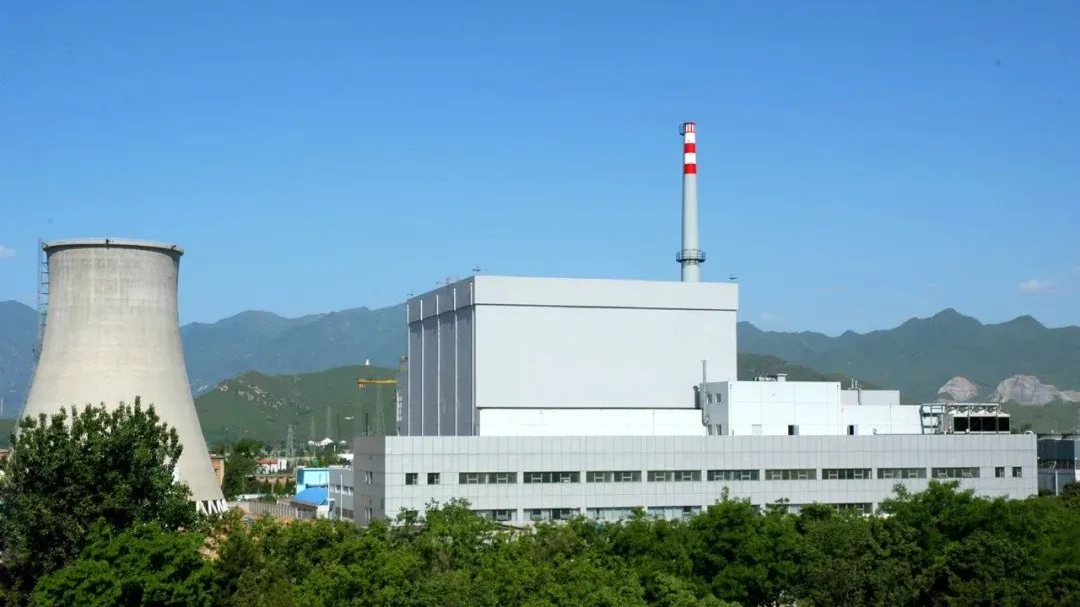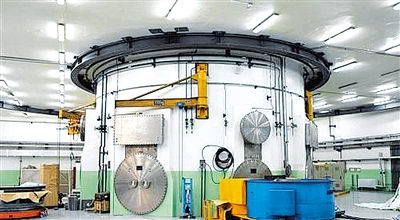
The China Advanced Research Reactor (CARR) at the site of the China Institute of Atomic Energy (CIAE) under the China National Nuclear Corporation (CNNC) in Beijing, China. /CARR
The China Advanced Research Reactor (CARR) at the site of the China Institute of Atomic Energy (CIAE) under the China National Nuclear Corporation (CNNC) in Beijing, China. /CARR
The China Advanced Research Reactor (CARR), a 12-year-old sophisticated and versatile light water tank type unit with heavy water reflector, is welcoming global scientists and worldwide cooperation, according to the China National Nuclear Corporation (CNNC).
So far, the institute has received over 40 international applications for CARR projects, covering aerospace, materials, petroleum and other cutting-edge industries.
Since its inception in 2010, the CARR has been opened to some 50 domestic research institutes and universities in a limited manner.
Its neutron flux, a key technical indicator, ranks first in Asia and third worldwide.
Unlike reactors in nuclear power plants which are used for generating electricity, the reactor at the CARR plant generates neutrons for the purpose of scientific research.
"The purpose of the reactor is to serve the country's major needs and solve problems in China's nuclear, aerospace, aviation, energy and transportation industries," Chen Dongfeng, chief expert of the CNNC, told China Media Group (CMG).
Hao Lijie, a research fellow of the China Institute of Atomic Energy (CIAE) under the CNNC, said the neutrons can pass through metal materials and detect internal defects in all kinds of thick materials, which are difficult for other radiation rays to achieve so.

A physics hall inside the China Advanced Research Reactor (CARR) at the site of the China Institute of Atomic Energy (CIAE) under the China National Nuclear Corporation (CNNC) in Beijing, China. /CARR
A physics hall inside the China Advanced Research Reactor (CARR) at the site of the China Institute of Atomic Energy (CIAE) under the China National Nuclear Corporation (CNNC) in Beijing, China. /CARR
Upgraded, safe research reactor
The CARR reactor, located at the site of the CIAE in Beijing's Fangshan District, has demonstrated China's development in nuclear science and neutrons experiment.
In 2022, the CNNC has upgraded the reactor to meet the growing demands and better serve future clients.
Scientists there are now working on research of aero-engine blades, examination of high-speed rail wheels and even ancient artifact from the Western Han Dynasty (202 BC-AD 25).
Its radiation exposure is relatively low, as the radiation detector at CIAE site marks only 0.51 microsieverts.
To put it simply, the amount of radiation absorbed by a scientist working at the CIAE site for 1,400 days or about 3.8 years, is about the same from a CT scan.
Concerning its operation time, Xue Xiaogang, secretary of the Party Committee of the China Institute of Atomic Energy, told CMG that "our goal this year is to keep the reactor operating for over 100 days, and we will strive to increase the operating time to 200-250 days in 2024."
"We also welcome international friends to do scientific research at our platform, and jointly forge some new frontiers."